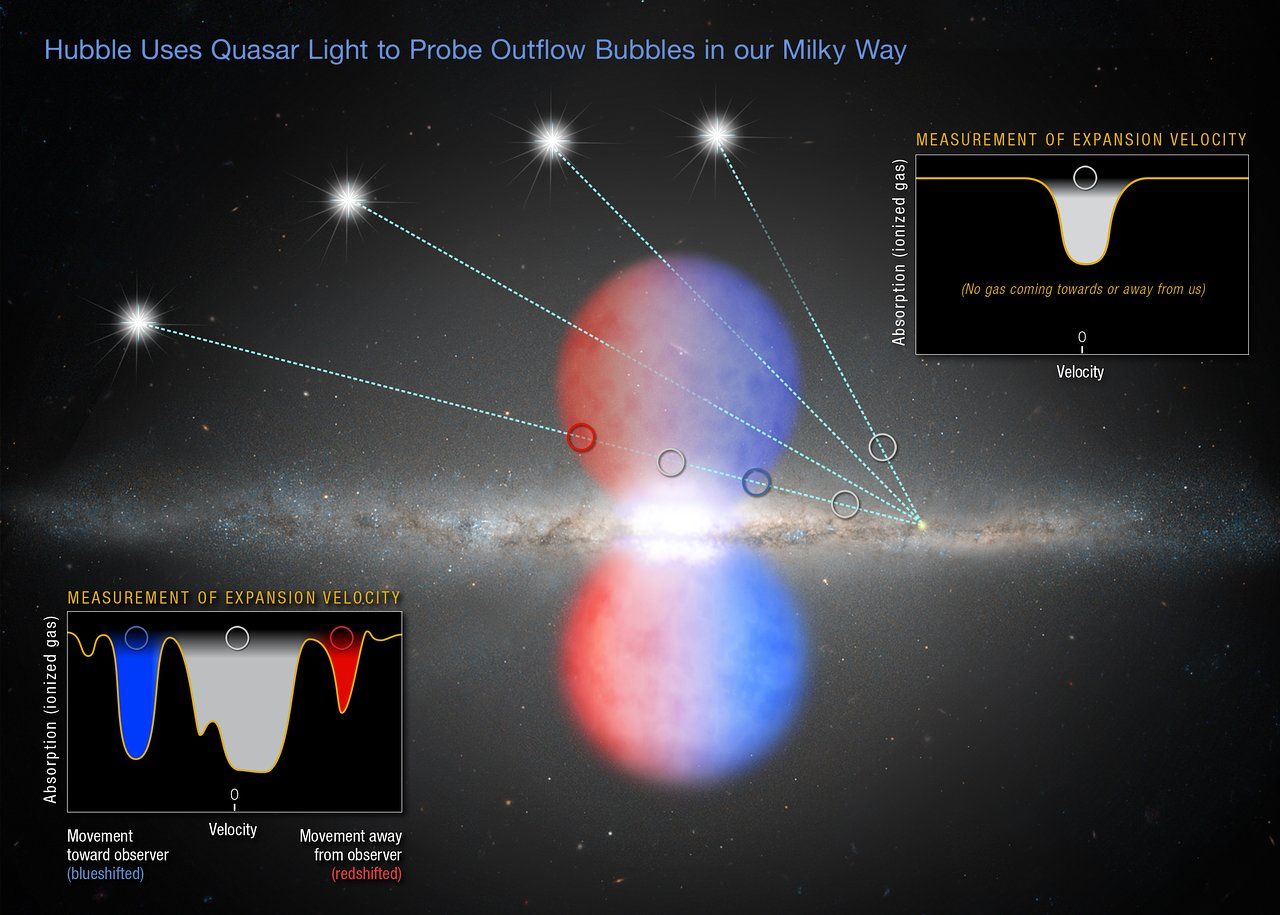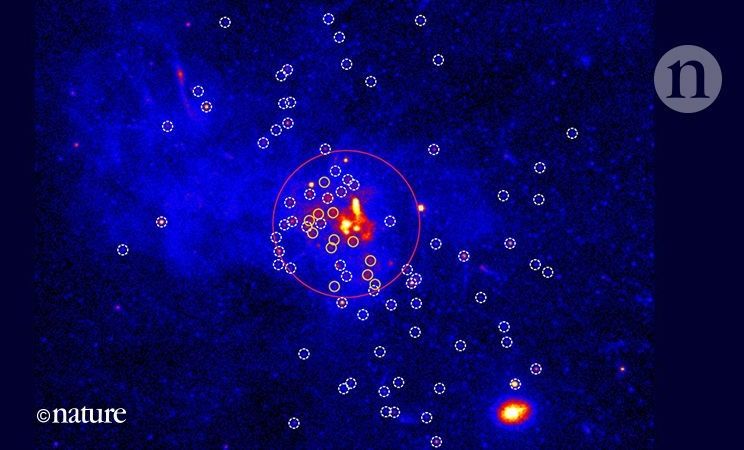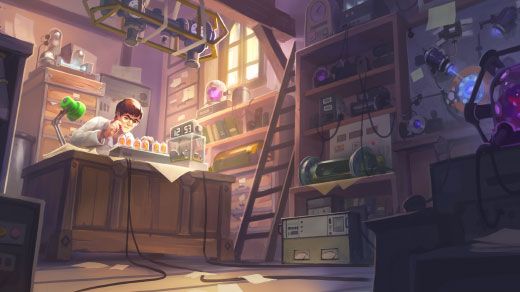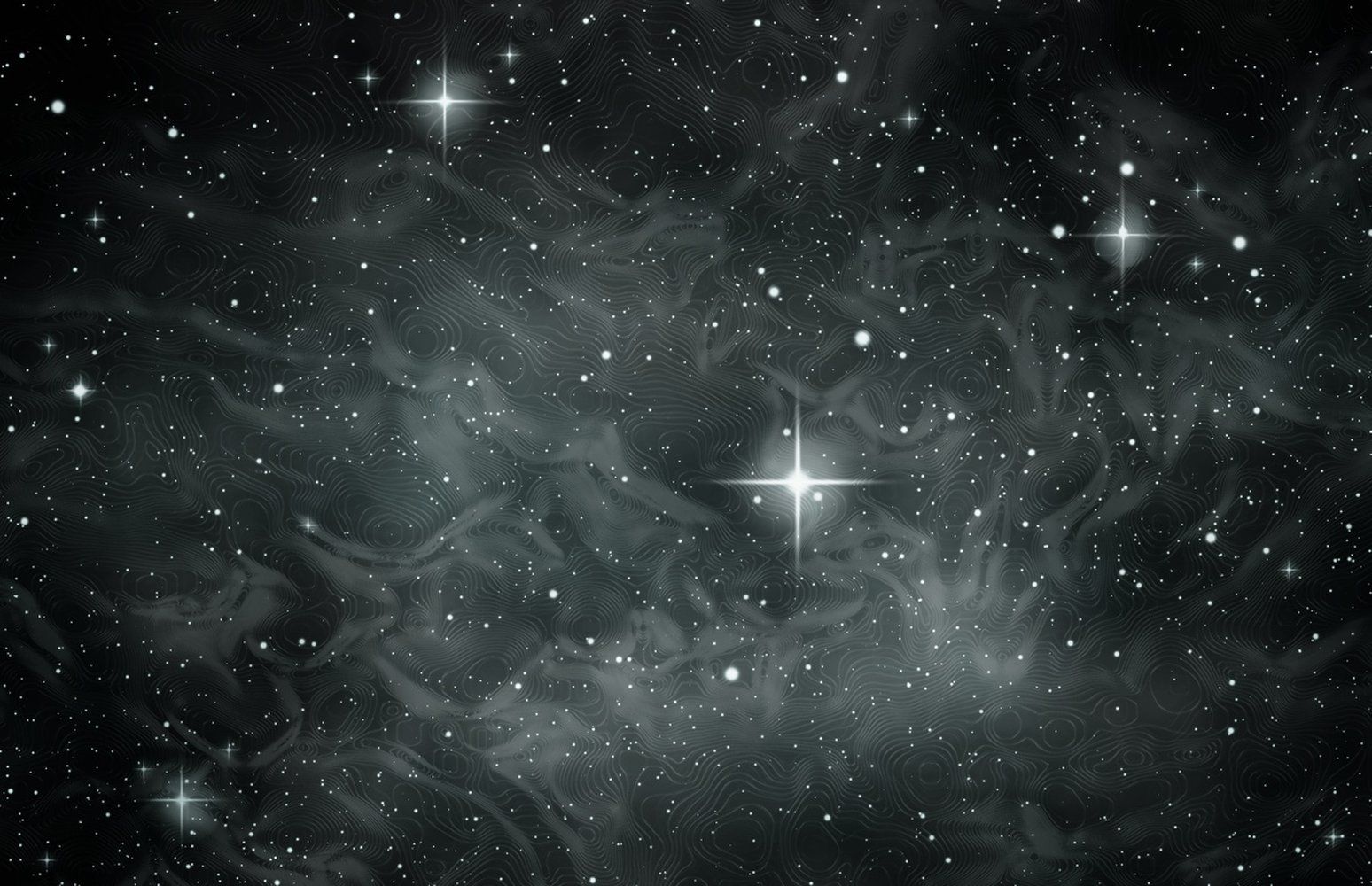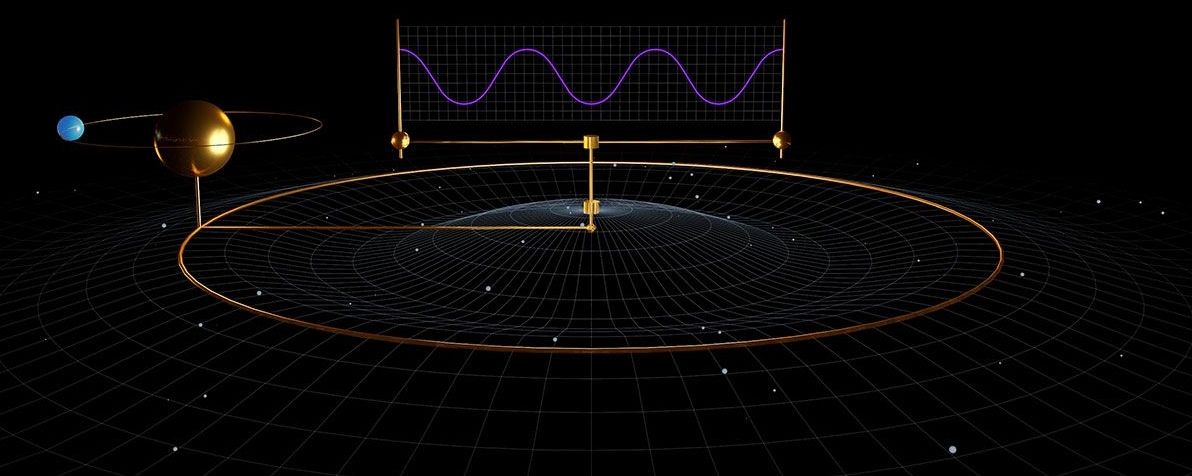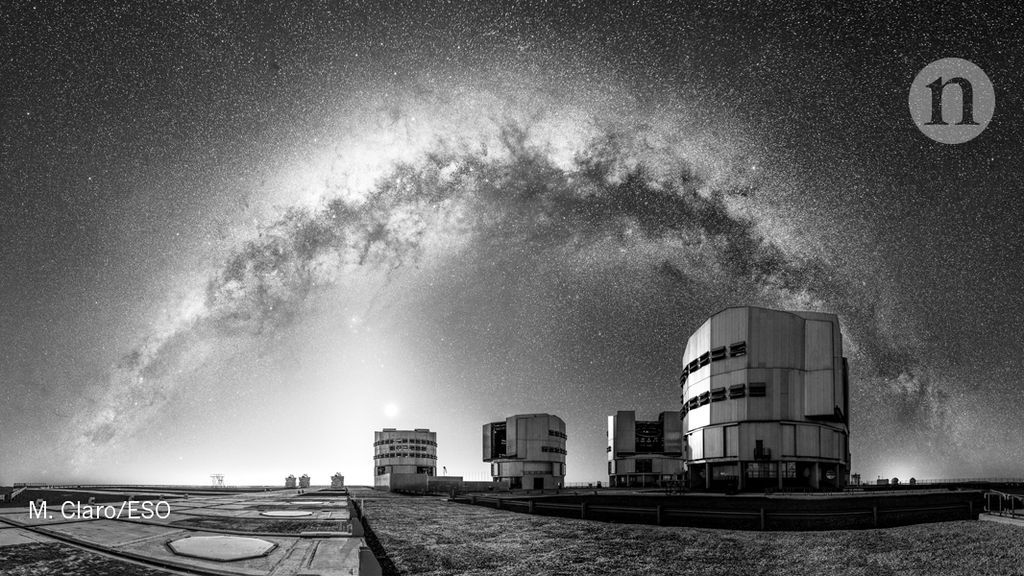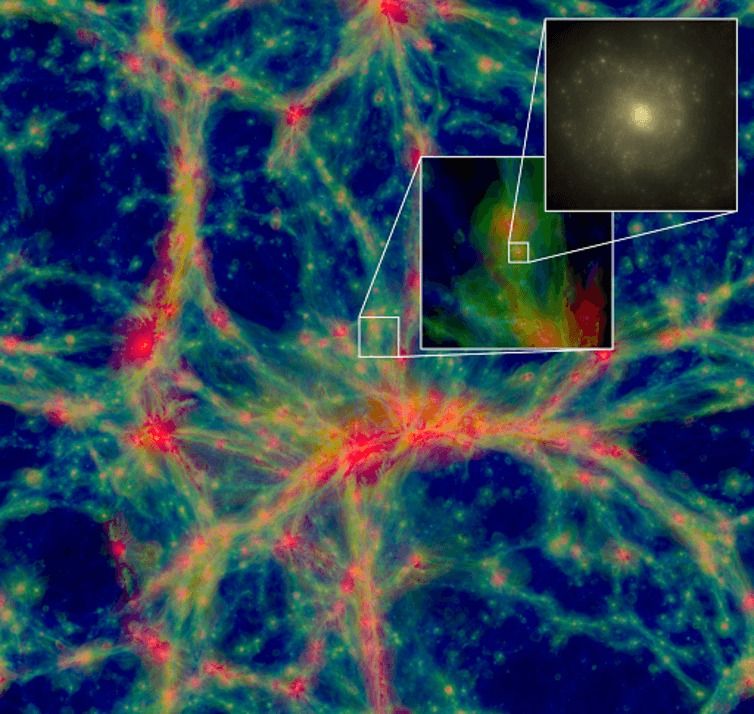This artist’s impression shows the light of several distant quasars piercing the northern half of the Fermi Bubbles, an outflow of gas expelled by the supermassive black hole in the centre of the Milky Way. The NASA/ESA Hubble Space Telescope probed the quasars’ light for information on the speed of the gas and whether the gas is moving toward or away from Earth. Based on the material’s speed, the research team estimated that the bubbles formed from an energetic event between 6 million and 9 million years ago.
The inset diagram at bottom left shows the measurement of gas moving toward and away from Earth, indicating the material is traveling at a high velocity.
Hubble also observed light from quasars that passed outside the northern bubble. The box at upper right reveals that the gas in one such quasar’s light path is not moving toward or away from Earth. This gas is in the disc of the Milky Way and does not share the same characteristics as the material probed inside the bubble.
